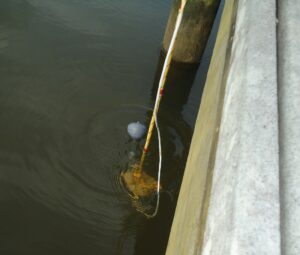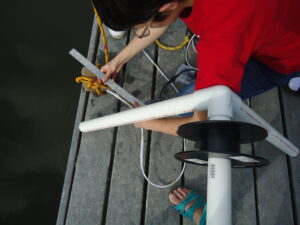I worked in a team to design and fabricate improvements to a near-infrared (NIR) sensor used to measure turbidity. This was a High-Impact Practice through the collaboration of Thomas Asmuth’s Advanced Interactive Electronic Art course and Dr. Lisa Waidner’s Bioinformatics for Biologists course.
As a design student, I learned how to use design thinking and moved through this project considering the bioinformatics students as clients. The designs on which this project was based were originally created by Noisebridge and further developed by Thomas Asmuth. This sensor mimics relatively new turbidity-sensing technology that uses quantitative light absorption measurements as opposed to qualitative optical measurements. One of the most important aspects of our work is the low production cost we maintained. Turbidity has an important relationship to water quality and environmental health, and the bioinformatics students studied this as it applies to local populations of specific bacteria.
Our team added a weight-and-buoy system that allows the user to control and measure the sensor’s depth, a small LED screen that displays measurements in real time, and several other smaller changes.
We presented this work as a poster at the 2022 UWF Student Scholars Symposium, and our abstract is located on Page 37 of the program.



